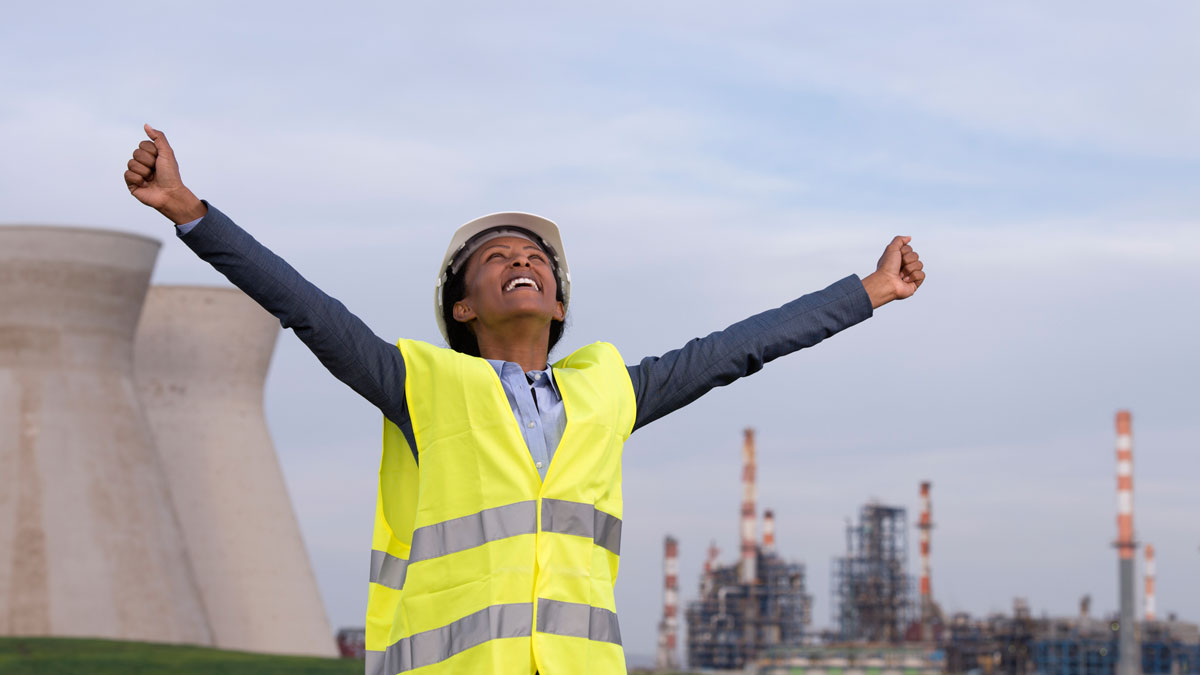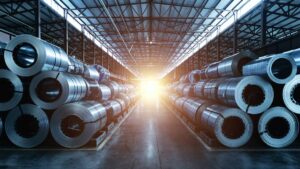RRS Summer Series: And the two winning commodities of 2022 are… uranium and coal

Picture: Getty Images
- Bell Potter names uranium and coal as the two winning commodities of 2022
- Valor highlights work to date at the Hook Lake uranium Project in the Athabasca Basin
- Stockhead asks DevEx’s managing director Brendan Bradley whether he thinks uranium is poised to become the new oil
“If you invested in the energy sector prior to 2022, congratulations – you’ve won the markets,” keynote speaker and Bell Potter market analyst Grady Wulff told investors at the Resources Rising Stars (RSS) Summer Series in Melbourne on Thursday.
The energy sector is up 41pc alone as coal prices continue to soar against the backdrop of recession and inflation that continue to play out and impact markets all around the world.
“In the US the Feds are tackling 40-year inflation with an aggressive stance of 75 basis point interest rate hikes while back at home in Australia, the RBA is scrambling with inflation of 7.3 per cent in the third quarter,” she told investors.
“Thermal coal is up 522 per cent this year alone so companies in this space are really capitalising on the growing price of this commodity.”
Whitehaven Coal (ASX:WHC) is the winning stock of 2022, she said, currently up 240pc this year alone with their average sales price jumping to $A581 a tonne for the September quarter, from the previous high of $A514 a tonne in the three months to June.
“The company has four mines under its belt – three open cut and one underground mine and Bell Potter recently downgraded the rating from a buy to a hold purely because of the September quarter.”
Bullish on uranium
Uranium is the other commodity Bell Potter is bullish on.
Governments are changing their stance on the carbon free power source and seriously considering its potential to shore up energy supplies and smooth the transition to renewables.
This is playing out over in Europe where governments have delayed the closure of nuclear facilities as they scramble to make up energy shortages stemming from Russia’s invasion of Ukraine.
And in the US long lead times to build and connect new renewable generation are prompting regulators and utilities to extend the life of plants that were slated for decommissioning.
“Japan is also turning nuclear power back on – the world is waking up to the fact that decarbonisation cannot happen without nuclear power, it is simply too costly and the fuel for nuclear power is uranium,” Wulff says.
The winning stock here is Boss Energy (ASX:BOE), she said, as the company continues to perform “very well” in the current environment.
“Boss is progressing towards first production in December 2023 with first sales due in FY24 and expected to double by FY25,” she added.
“According to the Global Uranium Conference, the outlook for the price of uranium is set to hit US$100 a pound by the end of next year, which is exactly when Boss plans to come online.”
Valor ‘targeting the greatest areas with the greatest returns’
One of the standout uranium presentations at the RSS Summer Series this year was Valor Resources (ASX:VAL) with its Hook Lake Uranium Project in Canada’s Athabasca Basin.
VAL executive chairman George Bauk said the company is targeting areas “which will provide the greatest return to shareholders”.
The Athabasca Basin is historically known as the highest grade of uranium in the world of up to 45% – 20 times the world average.
The region hosts 10 of the world’s top 15 highest grading uranium deposits including Cameco’s McArthur River and Cigar Lake mines, as well as recent world-class discoveries like NexGen Energy’s Arrow deposit and Fission Uranium Corp’s Tripe R deposit.
Work completed by Valor in 2022 includes an airborne gravity gradiometry (AGG) survey designed to identify gravity lows potentially caused by hydrothermal alteration associated with unconformity uranium mineralisation.
An AGG survey has also identified 11 new targets ahead of a detailed review of data planned with on-ground follow-up set to be undertaken in the 2023 field season.
The company also owns the Picha Copper Project in Peru where copper accounted for 75% of the country’s mining in 2020.
Question time with DevEx Resources
DevEx (ASX:DEV) is backed by chairman Tim Goyder – the same man who stewarded Chalice (ASX:CHN) and lithium explorer Liontown (ASX:LTR) into two of the ASX’s best performing stocks in 2021.
Stockhead spoke to managing director Brendan Bradley on the sidelines of the RSS Summer Series conference to ask what his market outlook for uranium is.
Is uranium the new oil?
“We believe there is a real shortfall in uranium out there and from our point of view it’s a unique opportunity,” he said.
“We’re exploring for high grade uranium because we believe in the uranium market – a lot of people are starting to recognise the value of uranium.
“The need for alternative energy as a base load power is real.
“It has to become as significant as oil – talk to the environmentalists out there who want us to move away from carbon producing energy sources, there are only a limited number of energy sources that are alternative and uranium is a consistency quality rating.”
What will be the catalyst in 2023 for an upward price swing?
“The catalyst is more demand on uranium as the reactors continue to be built – they’re not under contract, here are groups like Sprott buying it and gobbling it up and keeping it off the market.
“The catalyst will be when all of the reactors suddenly realise they’ve got to compete with each other and get uranium sold for years and years and years.
“That is what happened last time with the big boom, and that is what is going to happen next time as well.”
What role does the government play in promoting investor interest?
“The key thing for the regulators and government is to make sure there is a framework that ensures uranium exploration continues and uranium mining flows,” Bradley said.
“So as far as a local government like state and territorial – there’s a lot of support for that in both the NT and in South Australia.
“But beyond that, other governments haven’t quite caught up. The Federal government is now starting to wake up to the fact that if you want carbon-free energy as a base-load power, uranium has a role to play and that is the key.”
In terms of infrastructure, we still have a long way to go in Australia.
“It can be brought forward when they realise the urgency behind it,” he explained.
“Our businesses is discovery, whether the government wants uranium or not, I know there are a lot of countries like Japan that are very happy to take the uranium that we find.
“The key thing is, will Australia evolve to be a nuclear industry rather than just simply chit chat about it?
“They’re already having discussions and conferences about it – it seems to me to be a done deal, it’s just a question of when it is going to happen.
“Every other country but Germany are building nuclear reactors, realising there’s an energy crisis looming and that their reliance on carbon emissions is no longer there.”

UNLOCK INSIGHTS
Discover the untold stories of emerging ASX stocks.
Daily news and expert analysis, it's free to subscribe.
By proceeding, you confirm you understand that we handle personal information in accordance with our Privacy Policy.








